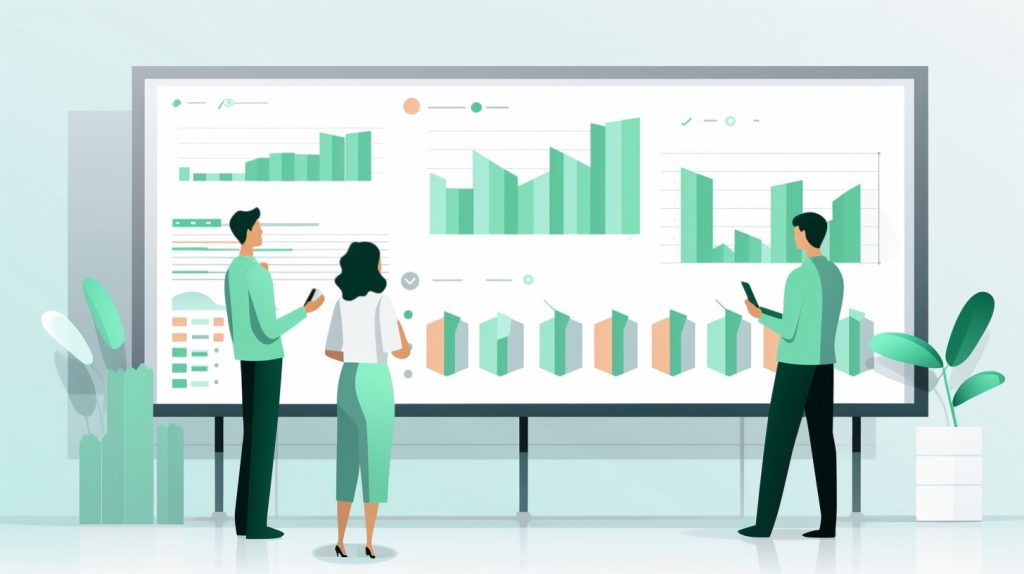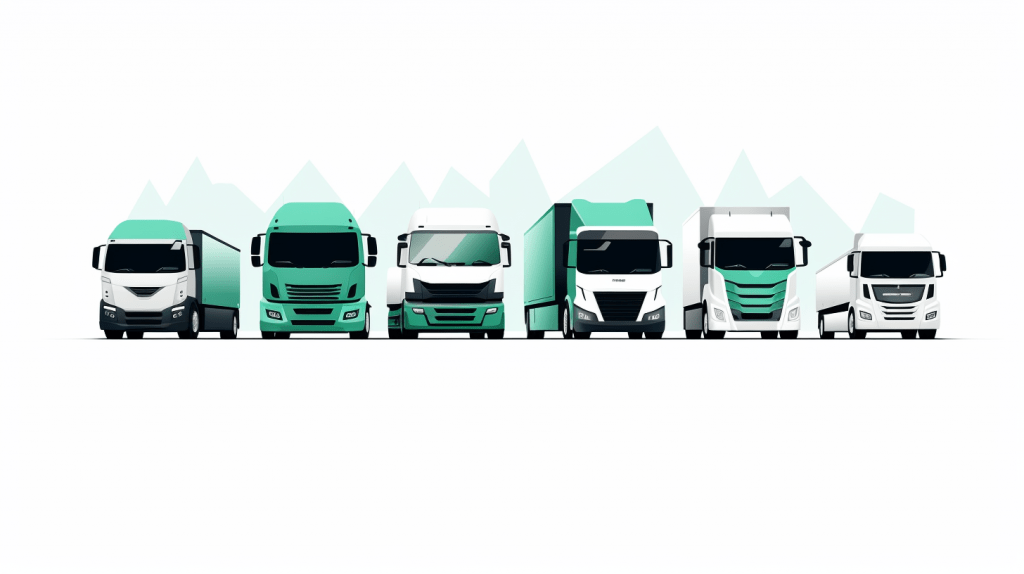The Internet of Things and Big Data are two growing technologies that gained significant attention in recent years. Following the MarketsandMarkets research, their global market sizes will surpass $650 billion and $273 billion by 2026, respectively.
When combined, Big Data and IoT have the potential to unlock immense opportunities for businesses in various industries. These techs can help companies optimize operations, gain valuable insights, and enhance customer experience.
Want to know how IoT and Big Data work together? Keep reading this post. Wellnuts will leverage its 10-year background in creating IoT solutions to explain how this technology impacts Big Data and vice versa.

What Is IoT?
The Internet of Things (IoT) is a network of connected devices, vehicles, home appliances, and other items embedded with sensors, software, and connectivity features that allow them to collect and exchange data.
How does such a network operate?
All devices in an IoT system gather data through sensors that monitor changes in their surroundings, e.g., temperature, humidity, or movement. Then, they use wireless networks like Wi-Fi or Bluetooth to send this data to a central server or cloud platform for further processing and analysis.
Thus, the components of the Internet of Things include the following:
- Devices (vehicles, home appliances, etc.)
- Sensors (connecting devices to computer systems)
- Connectivity (Wi-Fi, Bluetooth, cellular networks)
- Data (collected and transmitted by sensors)
- Software apps (processing and analyzing gathered data)
What Is Big Data?
Big Data refers to large and complex datasets that are too immense to be processed by traditional data processing software. It’s an enormous source of information businesses can access in real time. Big Data can be characterized by the following three features:
- Volume, meaning that Big Data comprises massive amounts of information.
- Variety, meaning that this kind of data is collected from various sources and in different formats.
- Velocity, meaning that Big Data is generated at high speed.
All in all, Big Data is a powerful tool that can provide valuable insights and benefits to organizations across numerous industries, from healthcare and finance to retail and manufacturing.
How Are the Internet of Things and Big Data Related?
Technologies like Big Data and the Internet of Things are frequently combined to provide advanced data analysis. The relationship between these two is complementary and interdependent, as IoT devices generate vast amounts of data that can be processed and interpreted using Big Data techniques.

Here are the primary points on the connection between IoT and Big Data:
- Big Data technologies enable the processing and analysis of IoT data. The massive amounts of data generated by IoT-enabled devices require specialized techniques for identifying patterns, trends, and insights.
- IoT data can enhance the accuracy and relevance of Big Data analysis. The information from the IoT devices can provide additional context and detail.
- IoT and Big Data can facilitate decision-making. The combination of these technologies provides insights to base decisions on.
The relationship between IoT and Big Data is symbiotic, as each technology enhances the capabilities of the other. As the use of IoT devices continues to grow, the importance of Big Data in processing and analyzing the data will only increase.
How Do IoT and Big Data Work Together?
Let’s explore the IoT Big Data relationship in greater detail. Here’s how these two technologies work together:
- Data collection. IoT devices embedded with sensors can gather environmental data and transfer it to the Big Data database.
- Data storage. The information collected by IoT devices can be stored in a Big Data platform designed to handle large volumes of structured and unstructured data.
- Data processing. Big Data technologies can use advanced algorithms to process IoT data.
- Real-time monitoring. IoT devices can provide insights in real time, and Big Data technologies can analyze this data to provide immediate feedback.
How Does IoT Contribute to Big Data and Vice Versa?
IoT and Big Data significantly impact each other, as they are both essential components of the modern digital ecosystem. Here are a few ways in which Big Data and the Internet of Things influence one another:
Generating Various Data
IoT devices generate a large amount of data from various sources. On top of that, this information comes in different formats like audio, video, text, or images and can be structured or unstructured. Big Data solutions, in turn, benefit from this variety of data and become more flexible and performant.
Increasing Data Volume
As already stated, IoT-enabled devices generate an unprecedented amount of data, which leads to an increased Big Data volume. Big Data technologies, in turn, become more scalable and capable of handling these enormous volumes of data.
Enabling Real-Time Analytics
Since IoT devices generate data in real time, organizations can monitor their systems swiftly. Owing to Big Data’s capabilities of fast data processing, companies can respond quickly to changing conditions and trends.
How Can Big Data and IoT Benefit Industries?
Big Data IoT symbiosis is transforming various industries, enabling enhanced analytics, better decision-making, and real-time monitoring. Consider the following sectors that benefit from these technological advances:
Healthcare
Big Data in IoT brings several benefits to the healthcare sector:
- Improved patient outcomes. IoT devices can track patient vitals and monitor their health status in real time. This data can be analyzed using Big Data techniques to detect potential health issues and allow doctors to provide timely interventions.
- Optimized hospital operations. IoT devices can monitor hospital procedures, such as bed availability, equipment, and personnel. Medical organizations can then use IoT Big Data analysis to optimize their processes.
Agriculture
Big Data in Internet of Things benefit the agriculture industry in the following ways:
- Enhanced crop yield. IoT devices can monitor soil moisture levels, temperature, and other environmental aspects. This data can be studied using Big Data to optimize irrigation, fertilization, and other farming practices to increase crop yield.
- Improved supply chain efficiency. IoT devices can monitor inventory levels, track shipments, and observe conditions during transportation. With IoT and Big Data analytics, companies can optimize the supply chain and reduce waste.
Transportation
Using the Internet of Things Big Data in the transportation industry allows for achieving the following benefits:
- Improved safety. IoT devices can monitor vehicle performance, driver behavior, and road conditions. Using IoT Big Data analytics allows companies to enhance road safety and prevent accidents.
- Optimized logistics. IoT devices can monitor cargo and track shipments in real time, while Big Data analytics enables logistics optimization and cost reduction.
The recreational vehicle maintenance and management solution we created could serve as an example. The Wellnuts team built a platform featuring real-time monitoring, route optimization, alerting system, and vehicle health management. As a result, our client got a solution that complies with safety requirements and makes better use of RV data.

The Future of Big Data and IoT in Business Value
The Big Data Internet of Things relationship is a promising venture. Here are the insights into how these technologies are likely to shape the future of business:
- Enhanced customer experience, owing to an in-depth analysis of customer behavior, preferences, and needs.
- Improved operational efficiency as IoT devices and Big Data analytics enable real-time supervision of all business operations.
- Predictive analytics by combining Big Data and IoT for forecasting future events based on the collected data.
- Data-driven decision-making, owing to the ability to collect and interpret various datasets.
The future of IoT and Big Data in business operations is bright. These techs will allow organizations to gain valuable insights, optimize operations, and create innovative products and services.
Wrapping Up
As you can see, IoT and Big Data benefit each other and various industries. They allow companies to improve performance, optimize operations, and generate more profits.
Since now you understand what IoT and Big Data are, you might be wondering how to implement these technologies into your processes. If you’re looking for a partner who has experience with the Internet of Things and Big Data, Wellnuts is here to help. We can leverage our expertise in creating data-driven IoT-enabled solutions to deliver such a project for you. Contact us today to get a detailed consultation.
Ready to talk? Contact us: ask@wellnutscorp.com




Very nice, good information!
Great article! I really appreciate the clear and detailed insights you’ve provided on this topic. It’s always refreshing to read content that breaks things down so well, making it easy for readers to grasp even complex ideas. I also found the practical tips you’ve shared to be very helpful. Looking forward to more informative posts like this! Keep up the good work!